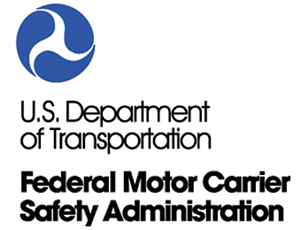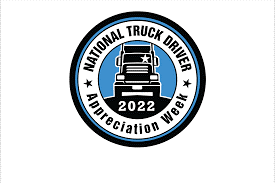Using Safety Technology Can Create a Safer Workplace for Your Drivers
Every time a truck driver gets behind the wheel, he or she is at risk. Trucking driving ranks seventh in the deadliest occupations in America. Truck drivers also face the highest number of fatalities of any job, at a rate of 918 fatalities each year.
According to the U.S. Bureau of Labor, the most common cause of workplace death is transportation accidents, which account for 40% of all on-the-job deaths; and delivery truck drivers experience nearly three times more injuries and deaths than any other occupation.2 And this number is only going up each passing year. The U.S. Department of Labor points out that the number of truck drivers who were killed on the job rose 6.6% from 2016 to 2018.3
The growing competition in the online retail industry, has also made a big impact on the day-to-day lives of truck drivers. With the “Amazon effect”, consumers are led to believe that one-day turnaround for their online deliveries is a norm. With increasing number of packages flooding the supply chain and the frequency of deliveries being made, truckers are performing under pressure.
While fleet managers and safety directors work hard to create a culture of safety, it’s important to make timely investment in telematics technology to combat the ever-increasing demands on truck drivers. With accident mitigation systems and enhanced braking technology it is estimated that you can reduce your accident frequency by as much as 40%.
How can Technology mitigate the dangers of being a truck driver?
Modern telematics technology provides features and capabilities that streamline fleet operations and can help make a dangerous job safer while underscoring a safety-first approach for your fleet. According to the U.S. Department of Transportation (DOT), companies that actively develop and promote a strong safety culture have fewer and less severe accidents. By setting and enforcing high expectations for safety behaviors from the top down, a culture of accountability is established. And, when combined with a telematics system to track and measure safety metrics, fleet managers can experience the power of a cost-effective and proven solution that helps:
Link driving behavior to driver safety. Telematics helps improve driver safety by monitoring the location and speed of every vehicle. It provides near real-time alerts when speeding incidents occur, and automated speeding reports on a daily, weekly, or monthly basis. It also highlights other risky driving behaviors such as hard braking and fast acceleration. By creating awareness of these behaviors, fleet drivers can be more aware when they get behind the wheel, and you can support a greater return on investment.
Increase vehicle safety. Improved maintenance leads to healthier, more efficient vehicles and decreases the risk of breakdowns or unexpected problems. Telematics can provide up-to-the-minute data on vehicle condition to help streamline fleet upkeep and control repair costs to extend the service life of vehicles. This is done via automatic mileage calculations, daily odometer updates, and notifications when preset maintenance intervals are reached. Using this continuous monitoring, engine issues can be identified early, making vehicles safer to drive and making it easier to stay in compliance with governmental emission requirements.
Elevate route safety. Unknown terrain and unsafe roads pose a constant driver hazard. Telematics technology helps mitigate the dangers associated with getting lost or taking the wrong route by providing navigation that calculates truck-legal routes, reduces left turns, and gives detailed “last-mile” directions. It also allows managers to set up geofence alerts and use GPS tracking data to steer workers through, or around, dangerous areas like construction sites or pockets of extreme temperature zones, and receive notifications when workers enter and exit hazardous places.
Jury Verdicts and Safety Technology
As we continue to see court verdicts rise to unprecedented amounts, the value of factual data from the truck at the time of the accident is proving to be priceless. Recently, the state of Florida Supreme Court allowed video evidence into summary judgment by amending the states rigid summary judgement standards. This went into effect on May 1, 2021. Trial judges are now finding that video evidence can be “blatantly contradicting” to a plaintiff’s submission and act on the video information.
Have a turn-by-turn visual driving account. It is difficult to know exactly what happens pre-crash. Was the driver distracted? Did another vehicle slam on the brakes? Now, thanks to dashcams, it is easier to understand the context of an incident involving a truck. Integrated fleet dashcams capture the moments before a crash occurs, and the visual data often demonstrates who was responsible in the case of a collision. Integration with telematics software data can also help provide extra insight into driver behavior. Contextual evidence of incidents surrounding an accident can help fleet managers and drivers reduce crashes and fatalities by creating accountability and establishing driver safety as a top priority.
Contact your Idealease location today to find out more about the safety technologies that are available to your fleet.
Applications Requested for Safe Driver Apprenticeship Program
The application process remains open for the Federal Motor Carrier Safety Administration’s Safe Driver Apprenticeship Program (SDAP). This is a three-year pilot program to assess whether 18-, 19- and 20-year-old drivers can safely operate commercial motor vehicles in interstate commerce after completing two probationary periods totaling 400 hours.
At the end of the pilot program, FMCSA will assess the safety data accumulated by these 18–20-year-old drivers and compare it to control data generated by older drivers to determine if the agency wants to proceed with a revision to the 21-year-old minimum age requirement for CMV drivers.
The agency seeks up to 1,000 carriers and 3,000 drivers to participate on a voluntary basis in the program. The agency will monitor the safety record of the participating carriers and drivers over the pilot program, which is expected to last three years.
On January 14, 2022, the FMCSA announced in a Federal Register Notice the establishment of the apprenticeship pilot program. To participate in the pilot program, motor carriers must register with the U.S. Department of Labor Registered Apprenticeship Program.
In addition, carriers that would like to participate in the SDAP must complete an application for participation and submit monthly data on an apprentice’s driver activity (e.g., vehicle miles traveled, duty hours, driving hours, off-duty time, or breaks), safety outcomes (e.g., crashes, violations, and safety-critical events), and any additional supporting information (e.g., onboard monitoring systems or investigative reports from previous crashes). Also, carriers will be required to notify FMCSA within 24 hours of: (1) any injury or fatal crash involving an apprentice; (2) an apprentice receiving an alcohol-related citation in any vehicle (e.g., driving under the influence or driving while intoxicated); (3) an apprentice choosing to leave the pilot program; (4) an apprentice leaving the carrier; or (5) an apprentice failing a random or post-crash drug/alcohol test.
Motor carrier applicants must not have a conditional or unsatisfactory safety rating and must meet other safety and regulatory compliance metrics. The SDAP will not authorize apprentice drivers to transport passengers or hazardous materials or operate double- or triple-trailer combinations or cargo tank vehicles.
National Truck Driver Appreciation Week is September 11-17, 2022
Nearly every aspect of daily life is made possible because a truck driver delivered the goods and resources people need.
National Truck Driver Appreciation Week is an important time for America to pay respect and thank all the professional truck drivers for their hard work and commitment in undertaking one of our economy's most demanding and important jobs. These 3.6 million professional men and women not only deliver our goods safely, securely, and on time, but they also keep our highways safe.











